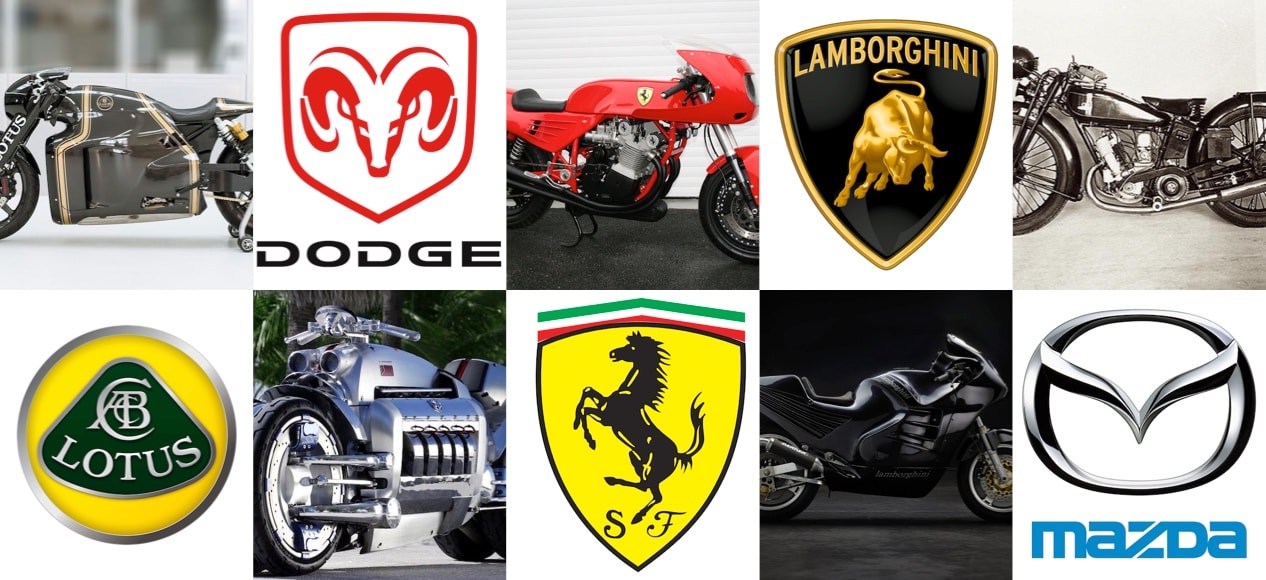There are many manufacturers which have built both motorcycles and cars. Peugeot, for example, was making both from the late 1800s, and although now under separate ownership, the brand’s lion emblem adorns Peugeot scooters and cars to this day. Ariel produced two, three and four wheelers from the early 1900s, while BSA produced pretty much everything from bicycles to buses. In the 1920s Triumph was a major producer of motorcycles and cars before the company split into two with one Triumph making bikes, the other cars. BMW also made motorcycles before cars, as did NSU, DKW and oh so many others, not forgetting Honda of course.
Conversely, prior to WW2 Suzuki produced small cars before making its first motorcycles in 1952. In the 1970s Hesketh built F1 racing cars before turning out the V1000 motorcycle in the early 1980s, and more recently the Ariel brand revived itself in 2001 by making 4-wheelers, and it’s now making both again. KTM as we now know it was formed in the early 1990s and added the four-wheeler X-Bow to its line-up in 2007.
Over the years, many motorcycle manufacturers have produced bikes powered by car engines. In 1930 Brough built ten Superiors powered by Austin 7 engines. Then there was the late ‘60s/early ‘70s Münch Mammoth powered by a four-stroke NSU car engine, the Van Veen OCR1000 of the late ‘70s with its NSU twin-rotor wankel motor and the Reliant-powered feet-first Quasar.
Many small firms along with countless eccentric amateurs have constructed two-wheeler specials powered by all manner of car engines including Citroen flat twins, Subaru and VW flat fours, Alfa V6s, Chevrolet, Ferrari, Ford and Maserati V8s, Dodge V10s and Lamborghini V12s. You name it and some nutter somewhere has shoehorned one into a motorcycle chassis.
Then there’s the multitude of unofficial computer design renderings of two-wheelers with Audi, Alfa, Aston Martin, Bugatti, Hyundai, Jaguar, Koenigsegg, Mercedes, Porsche, Tesla or Volvo branding – all car firms that don’t make bikes.
In 2015 Mercedes-Benz went one step further when it acquired a 25% stake in MV Agusta and the two firms collaborated to create the Solarbeam Theme show bike, but it was no more than a standard MV 800 F3 with yellow and black AMG graphics.
So, there’s long been a huge amount of cross pollination between cars and bikes, but there have been very few motorcycles either built by or officially sanctioned by current car manufacturers who don’t make bikes. Here are the five that best captured our imagination…
2014 LOTUS C-01
Lotus’ only motorcycle, the radical C-01, was revealed as a computer rendering in June 2013, with photos of the actual machine surfacing in early 2014. Styled by former Bugatti designer Daniel Simon, C-01s were built in southern Germany by racing car constructor Kodewa (now ByKolles Racing) under licence granted by Group Lotus plc. Production would be limited to 100 machines, with each being tailored to individual customer requirements at a cost of £70,000 apiece.
It was originally intended that the C-01 would have a carbon fibre monocoque chassis, but that idea was scrapped in favour of a chromoly steel tube frame with beefy aluminium swingarm fabricated by Moto2 chassis experts Kalex. Nestled inside the frame is a 175bhp 1,195cc v-twin from the KTM RC8R, with the whole caboodle wrapped in a 12-piece carbon fibre shell of exquisite quality.
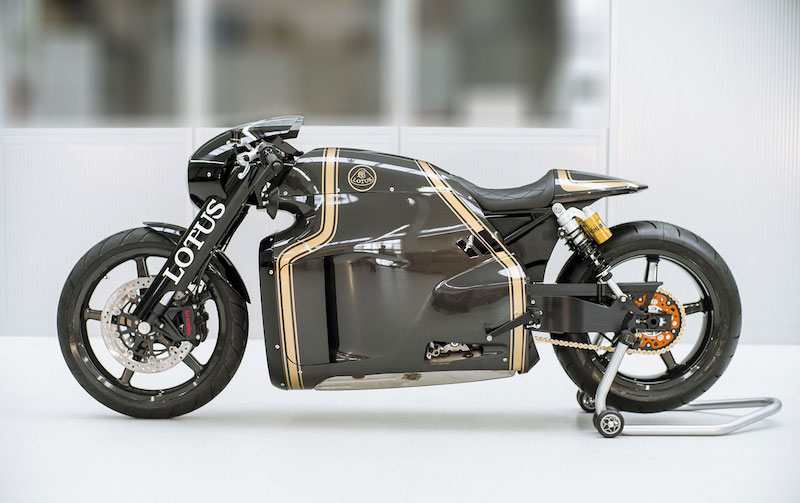
Under the shell, a huge airbox sits atop the motor where the fuel tank would normally be, while an even bigger exhaust silencer hangs beneath the engine. This meant that the (small) fuel tank had to be located under the seat, which in turn meant that there was no space for a rear mono-shock and linkage. Twin Ohlins units are employed instead, along with radial Brembo calipers and USD Sachs forks, but note that the C-01’s fork geometry and lengthy wheelbase appear to be more like those of a raked custom cruiser than a contemporary sportsbike. Also included is a particularly prone riding position with minimal wind protection.
It was reported in 2016 that the run of 100 bikes was all but sold out, but there have been few C-01s publicly offered for sale. In August 2016 one was offered at auction in the US with a £270,000-£345,000 estimate (not sold) while another, or possibly the same example is now being offered by a Dubai-based trader asking £275,000. Another example on offer in Germany has a slightly more realistic €139,900 asking price.
2003 DODGE TOMAHAWK
Built as a pure concept vehicle never intended for production, the Tomahawk’s primary function was to generate publicity and demonstrate that the Chrysler Group – a car and truck manufacturer – was bold and prepared to try anything. In terms of the extensive global media coverage gained the Tomahawk was a resounding success.
It was first shown to disbelieving crowds at the Detroit Auto Show in early 2003. With an 8,300cc V10 motor from a Dodge Viper supercar, the 680kg behemoth looked like it had been machined from a couple of large lumps of aluminium billet before being polished to a mirror finish, which is exactly what it had been.
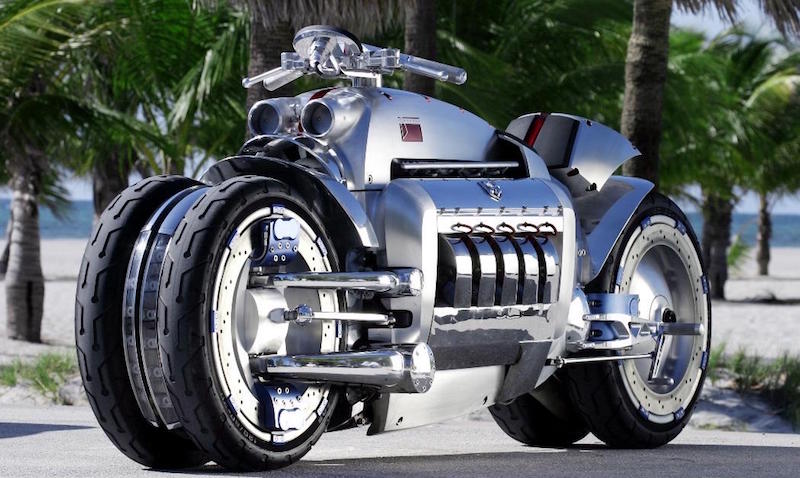
With 500bhp and 525lb/ft of torque, no more than two speeds were required in the foot-operated manual gearbox, while other experimental features included hub-centre steering, independent rear swing arms, inboard dual-chain final drive and, not least, those four wheels. With such a narrow track and no sidestand the Tomahawk would fall over were it not for a hydraulic rear suspension locking mechanism which held it upright when stationary. Unlike many concept vehicles the Tomahawk was built as a ‘functional runner’ and so in theory it could be counter-steered into corners and lean up to 45° with all four tyres keeping contact with the ground. With just 20° of steering lock, it had a supertanker’s turning circle.
Much of the speculation at the time focussed on the Tomahawk’s performance potential. In 2003 a senior Chrysler exec stated that no-one had exceeded 100mph, but with no independent dyno runs or road tests granted, and Chrysler employees forbidden from passing on riding impressions to the media, its speed and handling characteristics will forever remain the subject of speculation.
1995 FERRARI 900
You can’t just stick Ferrari’s iconic prancing horse emblems on a bike you’ve built and call it a Ferrari without having Italy’s hottest lawyers come down on you like a ton of bricks. So British MV Agusta guru David Kay wrote to Piero Ferrari seeking his permission to build a one-off Ferrari motorcycle in tribute to his father Enzo who had died a couple of years previously. Piero’s personal approval was duly received, and following 3,000 hours of work over four years, the world’s first and only Ferrari motorcycle was completed in 1995, and unveiled at that year’s Classic Bike Show.
The 900cc 105bhp twin cam, fuel-injected engine is not dissimilar to an MV four motor in appearance (which in turn was inspired by pre-war racing Alfa Romeo engines), but it was built from scratch by Kay, as was the Reynolds 531 steel-tube frame and many other parts. The bodywork is all aluminium, with the seat unit strakes paying homage to Ferrari’s 1984-1996 Testarossa supercar.
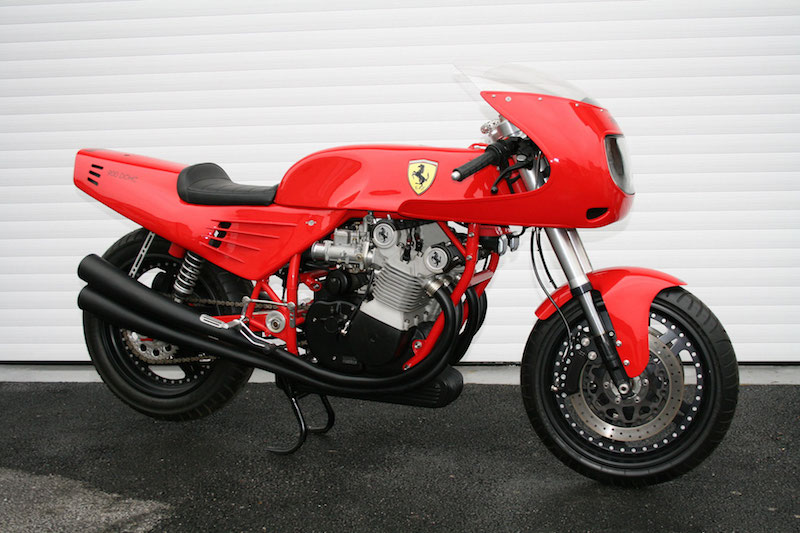
Having kept the bike as an objet d’art at his home for a while, Kay sold his creation to a collector. It was subsequently offered for sale at a Bonhams auction in Geneva in December 2008 carrying an optimistic £250,000-£290,000 estimate, and then offered again by Bonhams at Stafford in April 2012 where it sold for £85,500.
1986 LAMBORGHINI DESIGN 90
Despite producing the Countach, one of the most coveted supercars on the planet, Lamborghini nonetheless endured hard times in the late ‘70s and early 1980s. The company almost went into liquidation, but the wealthy owners of a sugar empire in Senegal, French brothers Jean-Claude and Patrick Mimran, came to the rescue and assumed full control in 1981.
With substantial cash injections the firm’s financial situation improved over the next few years, and believing that Lamborghini lovers would happily stump up for a Lamborghini motorcycle, Patrick Mimran commissioned Boxer Bikes (now Boxer Design) of Toulouse to build 25, or possibly as many as 50 bikes.
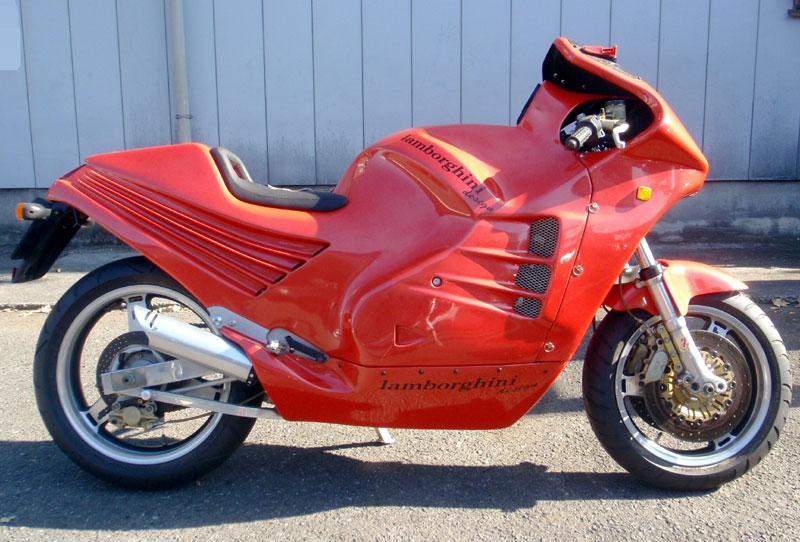
Boxer Bikes in turn commissioned racer-turned-frame specialist Claude Fior to design the chassis – a box section aluminium cradle frame similar to the 1984 Suzuki GSX-R750’s, and this would house a Kawasaki Z1000RX engine.
The Lamborghini-designed all-enveloping plastic bodywork bore more than a passing resemblance to the Ducati 750 Paso of 1986 – the same year the Lambo bike appeared – although the Lambo’s fairing was festooned with even more of the then fashionable vents and strakes.
Dubbed the Design 50 and costing about £10,000, or well over twice the price of a 1,000cc Japanese sportsbike, not many Lamborghini lovers were tempted and few were actually built – possibly as few as six. One of the five thought to survive was offered by H&H Auctions in March 2018 with a £85,000-£90,000 estimate. It didn’t sell.
1929 MAZDA
The Mazda Motor Corporation dates back to 1920 when it was a cork maker called Toyo Cork Kogyo Co. In 1927 the firm dropped ‘Cork’ from its name as by then it had become a machine tool manufacturer.
Due to the popularity of motorcycle racing in Japan at the time – a sport dominated by imported machines with a major race event held in the company’s hometown Hiroshima, Toyo Kogyo fancied a piece of the action and in 1929 set about designing and building a motorcycle.
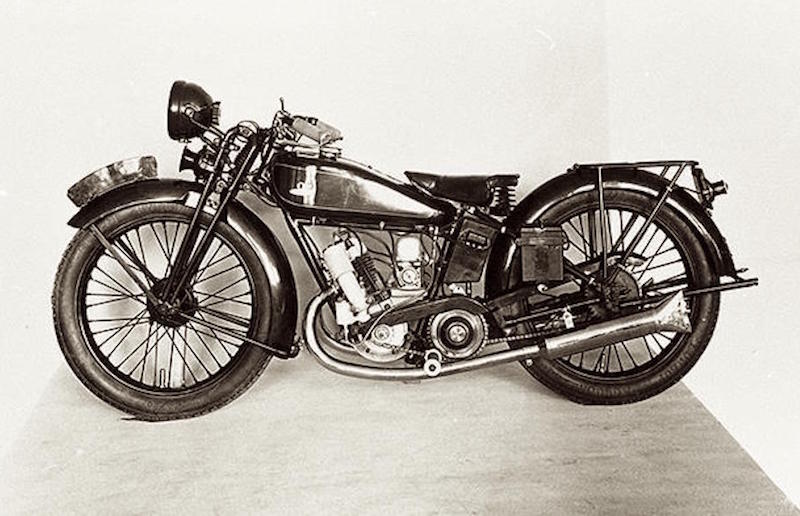
Six prototype 250cc two-stroke machines were built initially, with 30 production versions the following year. One was entered into the big race held locally and to everyone’s surprise the Toyo Kogyo 250 won first time out, beating the much fancied British Ariel and others.
Toyo Kogyo built just 36 bikes before switching to production of a powered three-wheeler rickshaw-type truck called ‘Mazda-Go’ in 1931. Mazda branding was used on all the firm’s subsequent vehicles (none being two-wheelers), although Toyo Kogyo Co. didn’t formally change its name to Mazda until 1984.
Carole Nash offer Multi Bike Insurance, check it out if you have a number of bikes!


